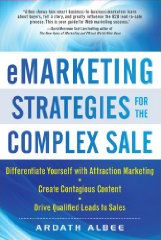Trouble vs. Conflict
For those of us who write, we know that --besides character, plot and setting --there's something that pulls us forward in a story. It's usually conflict. We want to know what's going to happen. The hardest thing to determine is the difference between trouble and conflict, but once you have it, you'll be able to use these tips to make sure that your scene is actually moving forward.
Trouble is related to circumstances.
Let's look at asimple example:
Your character has lost her job and is worrying about how she'll pay the bills.
This is trouble because we don't see her fighting for the job or anyone repossessing her car. This may lead to conflict, but she's in a circumstance right now and there is no action. She may have financial trouble looming ahead, but that's another circumstance, not a conflict. Not yet.
Now let's look at conflict and why it's more rich and dynamic than trouble.
Conflict (External)is the active blocking of a goal by an antagonist. Internal conflict is if she's warring against herself, trying to get out of her ownway, to get toher goal and can't,because an antagonist is pushingher emotionalbuttons.
Basically the key to a lot of this is that there has to be more than one character involved in conflict.
Now let's look at the example about the heroine who lost her job and try and change the scenario from trouble to conflict:
Your heroine is on the brink of losing her job. She really needs this job because it's the only job in the small town she lives in that she's qualified to do andthat pays enough money for her to take care of her special-needs daughter. But her daughter is sick with the fluand she doesn't have anyone who is qualified to take care of her, so she has to miss work to do that. But, she's been warned that she's already missed too much work and one more personal day for childcare will cost her her job.
Okay, so scrooge is her heartless employer. But it makes my point. What's she going to do? She doesn't have a lot of options because she loves her kid more than anything in the world and she can't leave her alone to fend for herself. She's only six. She tries to takeher daughterto daycare, but gets turned away because they can't take the chance that the other kids willget sick. Her neighbor - the nice older lady next door - is visiting her sister in Chicago, so that option isn't there.
So she calls her boss and pleads her case, but he holds firm - the evil slime - and tells her that if she isn't at her desk at 9:00, she's fired.
Hmm. she really needs this job. So she shows up with her daughter in tow, sneaks her into her office and snuggles her onto the sofa with blankets and a coloring book and gets to work.
Imagine what will happen when the boss shows up, proud of himself that he got his way and finds the kid drawing pictures on the wallabove the couch. In purple crayon. While mom is on the phone with a difficultclient and loses her temper because she's so stressed out...
Can you see thedifference? Thetrouble example was told to us. "She lost her job." This extension of it, showing her in conflict with her bossand knowing she is going to lose her job is showing us how the trouble came to be and playing it out.I don't know about you, but I'm rooting for her.
So remember the key. It all comes down to showing the reader what's happening.Giving them something to invest in about your character and building their empathy toward her. You need to show us the struggle, the attempt and the push back from another character.
That's what makes us turn the page of a good story.



